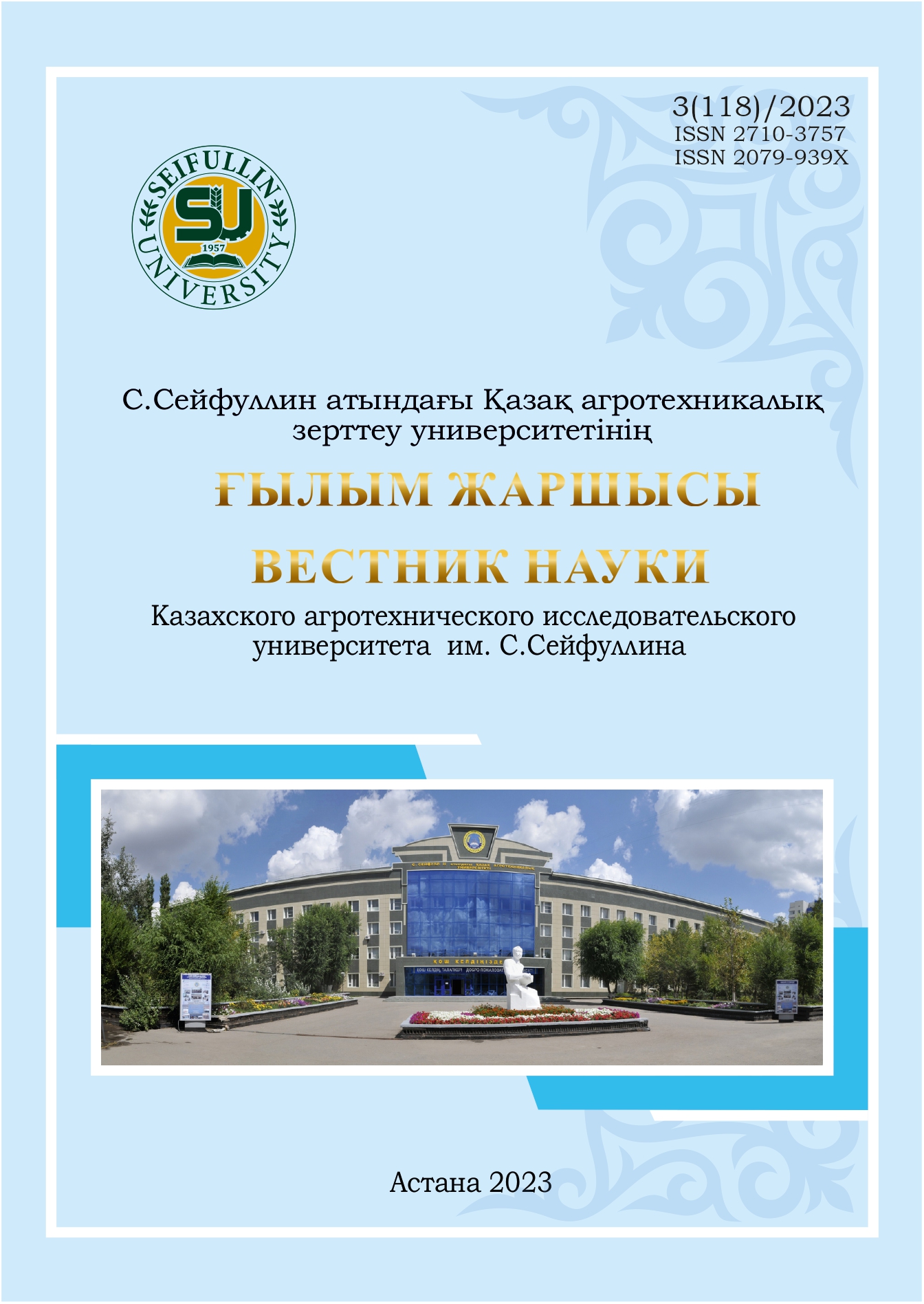THE INFLUENCE OF BIOFERTILIZERS ON THE SPREAD OF SPRING BARLEY DISEASES IN NORTHERN KAZAKHSTAN
DOI:
https://doi.org/10.51452/kazatu.2023.3(118).1476Keywords:
biofertilizers; seeds; phytopathogenic fungi; spring barley; Trichodermin-KZ.Abstract
The current flow of development of high-intensity agricultural production is impossible without the use of all types of fertilizers, plant growth regulators and
stimulants. The use of biofertilizers in crop production is becoming increasingly important in modern agriculture. The studies were carried out in 2021-2022 on the basis of the Research and Production Center for Grain Farming named after A.I. Baraev to assess the impact of biofertilizers based on rhizosphere microorganisms
on the spread of root rot and barley leaf spot. The spring barley variety "Tselinny 2005" was chosen as the object of study. The influence of domestic biofertilizers
on phytopathogenic fungi developed by scientists of the Kazakh Agrotechnical Research University named after S. Seifullin, such as Compo-MIX, Agrarka, Agro-MIX and Trichodermin-KZ. In the course of the results of the study,
inhibition of the growth of phytopathogenic fungi Fusarium, Bipolaris and Alternaria was observed during the treatment of barley seeds with biofertilizers of
microbial origin. The results of the conducted studies showed a high level of activity of the tested fertilizers of microbial origin against root rot. On experimental variants during the period of germination-tillering of barley, the
biological effectiveness against root rot of biofertilizers ranged from 64.3% to 85.7%. During the growth and development of barley, the use of biofertilizer based
on trichodermal fungi limited the spread of leaf spot and root rot from 50% to 69,4%. It was revealed that fusarium-helminthosporium diseases of seeds, root zone
and parts of the stem of barley are caused by their infection with pathogenic fungi F.graminearum, F.oxysporum, F.sporotriciella, F.heterosporum, A.tenuis and B.sorokiniana.

